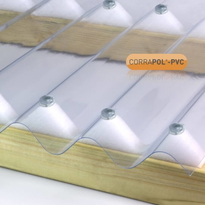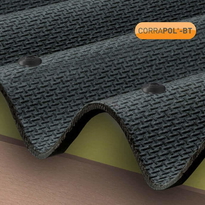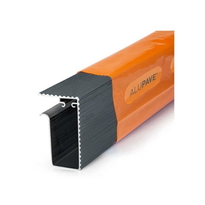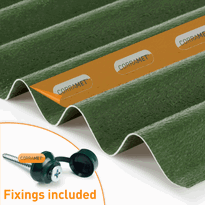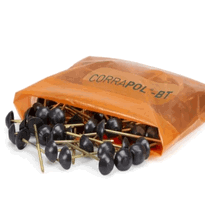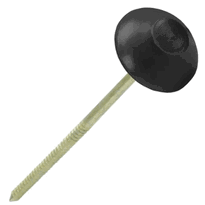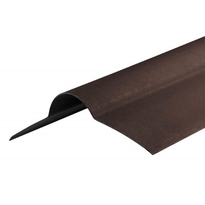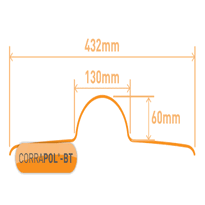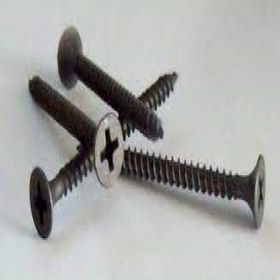Similar Categories
Types of Corrugated Roofing Materials
There are several types of corrugated roofing materials, each offering different advantages depending on their composition and intended use. Metal options such as galvanised steel, galvalume, and aluminium are popular for their durability and resistance to corrosion, making them suitable for harsh weather conditions. They come in various profiles, including 7/8 inch and 1/2 inch options, catering to different style preferences. For instance, 7/8 corrugated panels are generally stronger and suitable for larger spans, while 1/2 inch panels are often preferred for aesthetic reasons. Galvanised steel is appreciated for its cost-effectiveness and versatility, while aluminium is lightweight and ideal for coastal regions with high salt exposure. Galvanised steel resists corrosion well and can be an economical choice for many projects. Non-metallic options like PVC, bitumen, and polycarbonate sheets provide budget-friendly alternatives or specific features such as light transmission or tensile strength. These materials are commonly used for residential, commercial, or outdoor structures, offering choices that match specific needs and environments in the UK.
Key Features and Benefits of Corrugated Roofing
Corrugated roofing offers a variety of features and benefits that make it a popular choice for many building projects in the UK. Its affordability means it costs less than other metal roofing options, making it accessible for most budgets.
The material’s durability allows it to last up to 100 years, often outlasting traditional roofing materials like asphalt shingles. Being lightweight, corrugated panels are easier to install and require less structural support.
They also provide excellent weather resistance, effectively handling hail, wind, and storms. Additionally, corrugated roofing necessitates minimal maintenance due to its corrosion-resistant coatings. Its reflective surface helps keep buildings cooler, thereby reducing energy costs.
Widely Available in various colors and styles, corrugated roofing is accessible through local home improvement stores and metal manufacturers, ensuring ready supply for projects of all sizes. Overall, these features make corrugated roofing a reliable, sustainable, and cost-efficient option that fosters a sense of security and belonging for property owners across the UK.
Common Applications for Corrugated Panels
Corrugated panels are widely used in various settings across the UK for their strength and versatility.
They're commonly found in agricultural structures, providing durable roofing and siding that can withstand harsh weather conditions.
Additionally, these panels are utilised in residential and commercial projects, where their affordability and ease of installation make them a popular choice among builders and homeowners alike.
Agricultural Structure Uses
Agricultural structures often benefit from the durability and versatility of corrugated panels, making them a popular choice among farmers and builders in the UK. Their strength allows them to withstand harsh weather, chemicals, and environmental challenges common in farming. Metal panels are one of the most durable building materials available, ensuring the longevity of the structures they form. Corrugated metal is ideal for housing livestock, providing a clean and easy-to-maintain environment. These panels also offer long-term investments since their durability reduces replacement costs. The versatility of corrugated panels means they can be customised for different purposes, with various colours and styles such as MasterRib or 2-1/2″ corrugated. Additionally, they work well with other materials, enhancing the farm’s overall appearance and function. Farmers appreciate the cost-effectiveness and efficiency, knowing these panels will last for many years, supporting sustainable farming practices while adding a sense of community.
Residential and Commercial Roofing
Due to their durability and affordability, corrugated roofing panels are becoming increasingly popular in both residential and commercial buildings across the UK.
They're valued for their weather resistance, thermal insulation, and ease of installation. In homes, corrugated roofing offers visual variety with different colours and styles, providing long-lasting protection against rain, snow, and harsh weather conditions. The demand for metal roofing materials is growing, driven by their increased performance and aesthetic appeal. Its lightweight design makes it easier to handle during installation, and metal options add fire resistance, enhancing safety. Although less common in high-end houses, the aesthetic appeal and resilience of corrugated roofing attract many homeowners.
In commercial settings, corrugated sheets are widely used for large warehouses, factories, and retail spaces due to their affordability and rapid installation.
Their insulation properties also contribute to reduced heating and cooling costs, making them a practical choice for numerous building projects in the UK.
Selecting the Right Panel Profile and Gauge
Choosing the right panel profile and gauge is essential for ensuring a roof's strength, durability, and appearance. Different profiles, such as trapezoidal or corrugated panels, offer varying levels of support and water runoff capabilities, whilst the thickness of the material affects both structural integrity and cost. The gauge of the metal, which determines its thickness, directly impacts the roof's ability to withstand environmental stresses. Considering aesthetic options alongside these technical factors is crucial in selecting a panel that not only performs well but also enhances the overall appearance of the building.
Panel Profile Impact
The choice of panel profile and gauge has a significant impact on both the strength and appearance of corrugated roofing.
Deeper profiles, such as the 7/8" ridges, offer increased durability and are better suited for large spans and heavy loads. Moderate profiles, like the 3/4", strike a balance between strength and cost, making them appropriate for many residential projects. Taller corrugations, such as the 1/2", are less capable of bearing heavy loads and are mainly suited for lighter applications. Furthermore, wider rib spacing enhances rigidity and aids in fastener placement. The selected profile also influences aesthetic style; deeper profiles create bold shadows, while shallower ones provide a more minimalistic appearance. Deeper profiles, like the 7/8," provide greater structural support and resistance to deformation. Therefore, choosing the right profile is essential for effectively combining durability, aesthetics, and budget.
Gauge and Structural Strength
Selecting the right panel gauge and understanding its impact on structural strength are vital steps in designing a reliable corrugated roofing system. Lower gauge numbers indicate thicker steel; for instance, 24-gauge panels are approximately 30% thicker than 26-gauge. Thicker gauges, such as 24, resist higher wind loads and heavy snow more effectively, offering increased durability. The selection of gauge directly influences the roofing system's weight, which affects installation methods and structural support requirements. Engineers base their gauge selections on span length, wind speeds, and load requirements—smaller spans utilise lighter gauges, while larger spans necessitate thicker ones. Furthermore, higher tensile strength steel, such as 100,000 psi, can provide comparable strength with thinner gauges. Thicker panels also perform better against hail and expand less under heat, thus reducing fastener stress. Proper gauge selection ensures a sturdy, long-lasting roof tailored to specific regional conditions in the UK.
Visual and Aesthetic Choices
Visual and aesthetic choices for corrugated roofing encompass more than mere functionality; they also significantly influence the overall appearance of a building. Selecting the right panel profile and gauge not only enhances the intended aesthetic but also improves the property's kerb appeal.
-
Panel Profiles: Options such as corrugated, wide rib, or low profile provide distinct visual styles, ranging from rustic charm to sleek modernity.
-
Colour Options: Vibrant shades or subtle hues, along with coatings like SMP and PVDF, contribute personality and longevity to the roofing.
-
Profile Size: Larger panels, such as ?″, impart a rustic character, whereas smaller gauges offer a more streamlined and contemporary look.
-
Installation Style: The orientation of the panels—whether vertical or horizontal—affects how they contribute to the overall visual harmony of the structure.
Installation Tips for a Durable Roof
Proper installation techniques are essential to ensure that a corrugated roof is durable and weather-resistant. Ensuring the correct tools and materials, such as screws and sealants, is vital. The roof must have a proper slope of at least 3:12 and a solid substrate, such as moisture-proof plywood, for support. During installation, panels should be aligned squarely, overlapping correctly with the wind in mind, and fastened securely near the high points of the corrugations, typically every 30 to 46 centimetres. Sealants or closures should be applied to joints and flashings to prevent leaks. Purlins should support the panels evenly, and eave edges must be properly installed before the panels are laid down. These steps help create a long-lasting, weatherproof roof.
| Step | Tip |
|---|---|
| Proper tools | Use a metal blade saw or jigsaw for cuts |
| Overlap technique | Slim lap over fat lap, considering wind direction |
| Fastener placement | High points of corrugations, 30-46 centimetres apart |
| Sealant application | Seal all flashing and joint areas |
| Support and support spacing | Install purlins evenly under panels |
Cost Considerations and Material Options
Cost considerations play a significant role in selecting corrugated roofing materials, as prices can vary widely depending on the type, thickness, and size of the sheets.
Corrugated metal roofs are generally more affordable than metal shingles, with a lifespan of 30 to 45 years, compared to shingles that last longer but often entail higher initial costs.
PVC corrugated sheets present a budget-friendly option, offering lower retail prices than polycarbonate sheets.
Aluminium roofing typically costs about 35% more than steel, reflecting its superior quality.
Corrugated roofing options provide versatile price points, making them suitable for projects that require cost-effective solutions.
Some key points include:
- Metal roofing tends to be cheaper than shingles.
- PVC sheets are low-cost and lightweight.
- Aluminium is more expensive than steel.
- Material choice impacts overall project expenses.
Maintenance and Longevity of Corrugated Roofs
Regular maintenance is essential to maximise the lifespan and performance of corrugated roofs.
Routine cleaning with mild dish soap and water, along with microfiber cloths, helps prevent scratches and maintains the roof’s protective coatings. Clearing gutters and drains ensures that water flows properly, reducing the risk of corrosion.
Biannual inspections in spring and autumn can catch rust, loose fasteners, or leaks early. After storms, it's important to check for wind damage or debris accumulation.
Seasonal tasks such as trimming overhanging branches and reapplying protective coatings help extend the roof’s life. Tightening fasteners, removing snow carefully, and promptly repairing scratches or rust also enhance durability.
Proper maintenance not only preserves the roof’s integrity but also saves money in the long run, fostering a sense of security and belonging for homeowners who value the longevity of their property.
Environmental and Energy Efficiency Advantages
Corrugated metal roofs offer significant environmental and energy efficiency benefits that make them an eco-friendly choice for many buildings in the UK.
They're highly recyclable, with many roofs containing recycled materials and being 100% recyclable at end-of-life, which reduces landfill waste. The production process generates minimal waste due to precise cutting and a lightweight design, avoiding reliance on petroleum-based materials such as asphalt.
Additionally, these roofs reflect solar heat, which can lower cooling demands by up to 27%, helping to mitigate the urban heat island effect and making cities cooler. They can also cut energy costs by 10–25% and are compatible with solar panels, thus promoting the use of renewable energy.
Their durability and low maintenance requirements extend the roof's lifespan, reducing the need for replacements and consequently decreasing overall carbon footprints.
1. High recyclability reduces waste.
2. Reflective surfaces lower cooling needs.
3. Durable, long-lasting materials cut replacements.
4. Support renewable energy integration.
Conclusion
Corrugated roofing offers durable, affordable, and versatile options for various buildings across the UK. With different materials, profiles, and gauges available, it suits many applications while providing energy efficiency and environmental benefits. Proper installation and maintenance can extend the roof’s lifespan, ensuring long-term performance. By understanding the key features and selecting the right type, homeowners and builders can secure a reliable, cost-effective roof that meets their specific needs and withstands the elements.

